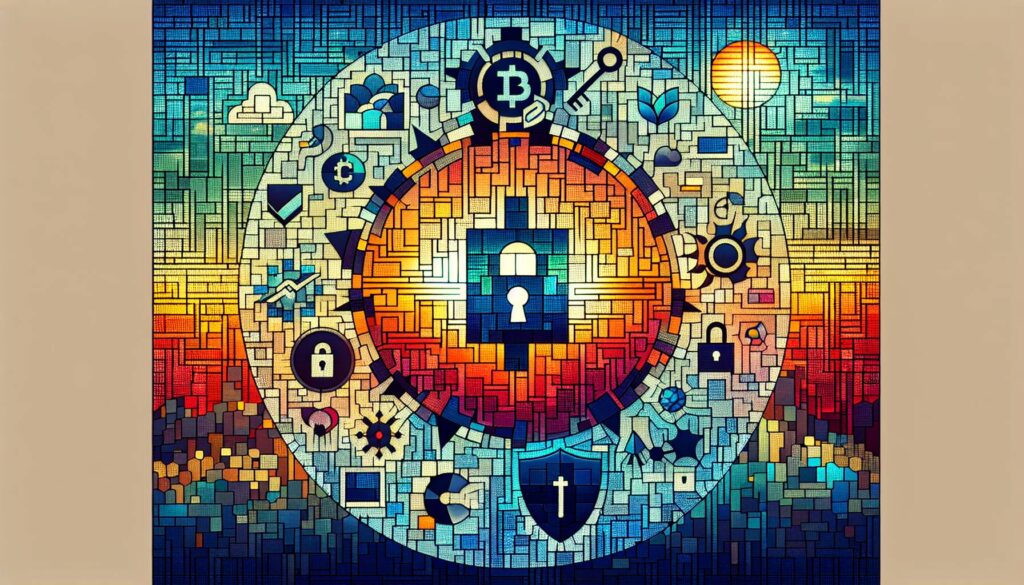Early Wednesday, the XRP Ledger (XRPL) experienced a brief interruption that raised concerns among its community. This significant incident stemmed from a hiccup in the network’s consensus mechanism, which is essential for the smooth operation of the ledger. During the disruption, the consensus process appeared to be functioning, yet validations—critical confirmations of transaction sets—were not being published, leading to a scenario where ledgers began to drift apart.
In the world of XRPL, consensus among validators is vital for incorporating new transactions into the ledger. Without a collective agreement on the transactions to include, the network cannot progress. The reported “drift” indicates that while the system was operational, a breakdown in communication among validators prevented necessary confirmations from being posted. This unusual situation drew the attention of network operators and users alike.
“It’s likely that servers refused to send validations precisely because they knew something was wrong,” stated Ripple’s CTO, David Schwartz, in a post on X following the incident. “They wanted to ensure no server accepted a ledger as fully validated when they couldn’t be sure the network would retain and eventually agree on that ledger.”
Interestingly, one validator operator took the initiative to reset the network’s consensus to a previously validated state. Fortunately, the network seemed to have resolved the issue autonomously as well, highlighting the resilience of the XRPL infrastructure. Schwartz also elaborated on a potential vulnerability, describing a scenario where all validators become wary of the network’s integrity and collectively withhold validations, leading to what he termed a “silent network” failure.
Despite the operational hiccup, it’s important to note that there were no assets at risk during this downtime. The price of XRP held steady and generally remained consistent with broader market trends in Bitcoin and other altcoins during this period. As the cryptocurrency landscape evolves, incidents like these underscore the importance of robust consensus mechanisms for maintaining network integrity and trust among users.

XRP Ledger Network Incident Overview
The XRP Ledger (XRPL) experienced a temporary unavailability due to a consensus mechanism issue. Below are key points that highlight the impact and implications of this event:
- Temporary Network Halt: The XRPL encountered a brief unavailability early Wednesday due to validation issues.
- Importance of Consensus: Consensus among validators is essential for updating the ledger with new transactions. Without it, the network cannot function correctly.
- Drift in Ledger: The ledger of XRPL began to “drift apart,” meaning validators were unable to agree on transaction confirmations.
- Manual Intervention: At least one validator operator had to manually reset the network’s consensus to a previously validated state during the incident.
- Self-Rectifying Problem: Ripple CTO David Schwarz indicated that the network could have resolved the issue independently without external intervention.
- Failure Mode Awareness: The incident highlighted a potential failure mode called the “silent network” failure, wherein validators refuse to send validations due to perceived issues.
- No Assets at Risk: Despite the downtime, no assets were endangered, and XRP prices remained stable, aligning with broader market movements.
This incident serves as a reminder of the critical nature of consensus mechanisms in blockchain technology and how disruption can impact network functionality, although it was well-managed in this case.
Understanding these key points can help readers appreciate the complexities of blockchain networks and the importance of validation and consensus processes. It also highlights the resilience of the XRPL, emphasizing that issues can be resolved without jeopardizing assets, which may enhance investor confidence in the system.
XRP Ledger Faces Brief Downtime: An Analysis of Network Resilience and Community Impact
The recent disruption in the XRP Ledger highlights critical aspects of how decentralized networks manage consensus and maintain operational integrity. Unlike traditional financial systems that can experience downtime but revert to centralized control, XRPL’s reliance on collaborative validation by multiple node operators showcases both its strengths and vulnerabilities. This incident revealed that while the consensus mechanism is robust in intention, the execution can falter, leading to moments where the network appears to be functional despite underlying issues.
One of the key advantages of the XRP Ledger is its decentralized validation approach, which enhances security against singular points of failure. This incident, however, unearthed potential risks associated with a consensus drift where validators individually choose not to publish confirmations. The ability of the network to self-correct, as noted by Ripple’s CTO, indicates adaptive resilience—yet it raises questions about the underlying assumptions validators must make about each other’s actions. This could be a double-edged sword, as the same trust that builds the network can also result in gridlock during unforeseen outages.
The downtime situation can particularly benefit developers looking to enhance consensus protocol mechanisms or introduce alternative architecture solutions that may improve resilience. Such innovations could provide competitive advantages, compelling Ripple to adapt and refine its original framework. However, stakeholders—such as businesses and individual users relying heavily on XRP for transactions—could face challenges, especially if this incident contributes to a perception of instability. If this concern becomes widespread, it may deter new users from adopting the XRP Ledger, impacting its market competitiveness in comparison to more robust platforms like Ethereum or Solana, which have demonstrated more consistent uptime in their transaction processes.
On the flip side, existing network users, especially those familiar with blockchain technology, might appreciate the transparency of the incident and the proactive communication from Ripple’s leadership. This level of openness fosters trust and shows genuine concern for maintaining network integrity, reinforcing a sense of community among users. However, if future outages occur, even with transparency, it could lead to skepticism about the network’s reliability, sparking community dialogue on the need for enhanced governance structures or better fail-safes to prevent “silent network” failures. Ultimately, the actions taken post-incident will play a critical role in shaping user sentiment and confidence in the XRPL’s long-term viability.

















